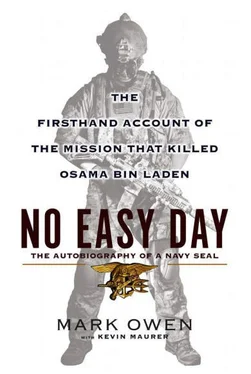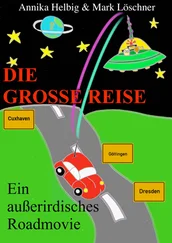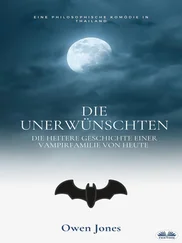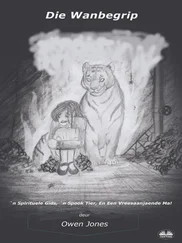The ranges were some of the best in the world. This wasn’t your basic range where you shot at targets from a line. No, we’d race through obstacles, fire from the skeletons of burnt-out cars, and do a set of pull-ups before racing to shoot a series of targets. We always seemed to be moving. We already had the basics down, we were learning to shoot in combat. The instructors worked to get our heart rates up so that we had to control our breathing while we shot.
Our training facility had two kill houses. One was made of stacked railroad ties. It had a few long hallways and basic square rooms. The newer house was modular and could be reconfigured to resemble conference rooms, bathrooms, and even a ballroom. We rarely saw the same layout more than once. The goal was to throw something new at us each day to see how we handled it.
The pace of training was fast. The instructors didn’t wait for people to catch up. It was a speeding train, and if you didn’t catch on by the first day, you would most likely be heading back to your previous unit in very short order. Like a reality show, each week our numbers grew smaller as guys washed out. It was all a part of preparing us for the real world, and ferreting out the “Gray Man.” He was the guy who blended into the group. Never the best guy, but also not the worst, the Gray Man always met the standards, exceeding them rarely, and stayed invisible. To root out the Gray Man, the instructors gave us a few minutes at the end of the week to perform peer rankings.
We sat at beat-up picnic tables under an awning. The instructors gave each one of us a piece of paper.
“Top five, bottom five, gentlemen,” one of the instructors said. “You’ve got five minutes.”
We each had to make an anonymous list of the five best performers in the class and the five worst. The instructors didn’t see us all hours of the day, so top-five-bottom-five allowed them to get a better sense of who was really performing well. A candidate could be a great shot and do everything perfectly in the kill house, but outside of training he wouldn’t be easy to work with or live with. The instructors took our top-five-bottom-five and compared them with their lists. Our assessment contributed to the fate of a candidate because it drew a clearer picture of the student.
At the beginning, it was kind of obvious who the bottom five were in the class. It was easy to see the weak links. But as those guys started to disappear it wasn’t so easy to pick the bottom five anymore.
Charlie was always in my top five. So was Steve. Like Charlie, Steve was an East Coast SEAL. I used to hang out with Steve and Charlie on the weekends and during our training trips.
If Steve wasn’t working, he was reading, mostly nonfiction with an emphasis on current events and politics. He also had a decent stock portfolio, which he monitored on his laptop during the few hours of downtime. Not only was he an outstanding SEAL, he could talk politics, investing, and football at the same level.
He was thick, not lean like a swimmer but more like a linebacker. Charlie used to joke that Steve looked like a groundhog.
He was one of the few who routinely kicked my ass with a pistol. At the end of each day, I would always check his score to see if he beat me. Like Charlie, Steve had been a CQB instructor for the East Coast teams before coming to Green Team. He had three deployments, and he was one of the few East Coast guys with any combat experience. At that time, only West Coast teams had deployed to Iraq or Afghanistan. Steve had deployed to Bosnia in the late 1990s and his team got into a firefight, one of the few before September 11.
Charlie and Steve always seemed to end up on the top of my list. As more and more guys washed out, the task became harder and harder.
“Coming up with bottom five is kicking my ass,” I said to Steve one night.
We were both sitting at the table in the range house cleaning our rifles.
“Who were your bottom five last week?” he said.
I rattled off some names, many of the same guys on Steve’s list.
“I don’t know who to put down this week,” I said.
“Ever think of putting yourself down there?” Steve said.
“I got three names. The last two, I don’t know,” I said. “I guess we could use our own names. I don’t want to throw someone else under the bus.”
I didn’t think either of us was doing badly in the class.
“I’m going to risk it,” Steve said. “We need five names.”
A few weeks earlier, we tried to leave the bottom five blank. As a class, we decided to rebel and stand up to the instructors. It didn’t last long. We spent the rest of the night running and pushing cars for hours, instead of unwinding after a long day of training.
That Friday, I put my own name down on the bottom five. So did Steve. He was willing to stand up for what was right. Steve was a leader in the class, and when he came up with ideas, guys listened.
By the end of the CQB block of training in Mississippi, we had lost about a third of the class. The guys who washed out couldn’t process information fast enough to make the correct split-second decision. It wasn’t that they were bad guys, because a lot would re-screen and make it through on their second try. Those who didn’t would go back to their regular teams, where they’d typically excel.
The rumor around the command was if you passed the CQB block of training, you had a more than fifty-fifty chance of passing Green Team. The instructors heard the same rumor, so when we got back to Virginia Beach, they kept the pressure on, never letting us forget that we were a very long way from being done.
______
We were only three months into a nine-month training course. The next six months wouldn’t be any easier. After CQB, we went on to train on explosive breaching, land warfare, and communications.
One of the SEALs’ core jobs is ship boarding, called “underways.” We spent weeks practicing boarding a variety of boats from cruise ships to cargo vessels. Although we spent a lot of time in Afghanistan and Iraq, we needed to be proficient in the water. We rehearsed “over the beach” operations where we would swim through the surf zone and patrol over the beach and conduct a raid. Afterward, we’d disappear into the ocean, linking up with our boats offshore.
During the last month of training we practiced VIP security details. Afghan president Hamid Karzai’s first security detail were SEALs from the command. We also attended an advanced course in SERE, or Survival Evasion Resistance and Escape.
The key to the course was managing stress.
The instructors kept everyone tired and on edge, forcing us to make important decisions under the worst conditions. It was the only way the instructors could mimic combat. Success or failure of our missions was a direct reflection of how each operator could process information in a stressful environment. Green Team was different than BUD/S because I knew just passing the swim or run and being cold, all without quitting, wasn’t enough.
Green Team was about mental toughness.
During this time we were also learning the culture of the command. Throughout Green Team, we were on a one-hour recall to simulate what we would experience on the second deck. If recalled, the pager buzzed and we had an hour to get back to work and check in. Every day at six o’clock, we got a test page. The pagers became another source of pressure the instructors used. Several times, we’d get pages before dawn to come into work.
One Sunday around midnight, my pager went off. Still shaking the sleep from my head, I rolled into the base in time and was told to put on my PT gear and stand by. We were going to have a PT test.
We weren’t supposed to be more than an hour away and couldn’t drink to intoxication. We had to be able to perform when called upon. We could get a page and be on a plane to anywhere in the world within hours.
Читать дальше












